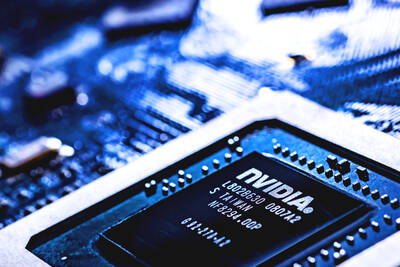A new battle in an ongoing war between game console makers is expected to break out at a leading videogames conference that opens in Los Angeles tomorrow.
Typically a stage for new blockbuster titles, the Electronic Entertainment Expo (E3) this year will also be an arena where Sony, Microsoft and Nintendo duel with motion-sensing controls for rival PlayStation 3, Xbox 360 and Wii consoles.
“Motion controls are by far and away going to be the talk of the show,” said Scott Steinberg, head of videogame consulting firm TechSavvy Global.
Microsoft has planned a set of high-powered events to debut “Project Natal” technology that lets players control Xbox 360 consoles using natural gestures such as the wave of a hand.
Natal boasts facial recognition capabilities that enable consoles to distinguish between players.
“The big story of the year is going to be motion controls for Xbox 360,” Game Trailers editor-in-chief Shane Satterfield said.
“Nintendo sort of broke the mold for the videogame industry with Wii and everyone else has been trying to capture lightning in a bottle ever since,” he said.
At a game developers conference in San Francisco in March, Sony unveiled a hotly anticipated motion-sensing Move controller that it hopes will fuel new interest in its PlayStation 3 (PS3).
Movement wands that synch with eye cameras on the consoles will hit the market in time for the year-end holiday shopping season, as will Natal technology, which will be renamed before it heads for store shelves.
Sony, Microsoft and Nintendo are expected to reveal rich line-ups of videogames they hope will win players to their consoles and motion-control systems.
“It’s going to be a big battle between Sony and Microsoft,” Satterfield said. “On the heels of that, Nintendo has a big show planned. It is going to be tough to topple Nintendo.”
A shift to downloadable content will be among the trends on an E3 show floor renowned for action-packed trailers displayed on giant screens, demonstrations of coming titles and models dressed as popular game characters.
Videogame publishers use downloadable content to deliver gaming software as well as virtual items such as outfits or weapons to consoles via the Internet. Popular titles can be kept alive by selling new missions or sequels to original games bought on packaged disks at real-world stores.
Downloadable content has a dark side, tempting videogame makers to hold back on content in the original package so they can sell it to players later. Knowing that glitches can be fixed with patches available online can also result in premature releases of titles.
“[Downloadable content] has already been abused,” Satterfield said. “It’s a slippery slope for developers. Sadly, it looks like that is the direction it is going.”
Downloadable content also opens up opportunity for independent game makers to sell titles from Web sites and for games to be adapted in real time based on feedback from players, Steinberg said.
For example, Bethesda Softworks resurrected the main character of Fallout 3 who died at the end of the original title, but was brought back to continue the adventure.
E3 remains, at its heart, a showcase for top-shelf blockbuster videogames. Hot titles on the expo horizon include Rage and sequels to popular franchises including Halo, Call of Duty, Little Big Planet, Civilization, Fallout, Mafia, Mario, Fable and Portal.

When Lika Megreladze was a child, life in her native western Georgian region of Guria revolved around tea. Her mother worked for decades as a scientist at the Soviet Union’s Institute of Tea and Subtropical Crops in the village of Anaseuli, Georgia, perfecting cultivation methods for a Georgian tea industry that supplied the bulk of the vast communist state’s brews. “When I was a child, this was only my mum’s workplace. Only later I realized that it was something big,” she said. Now, the institute lies abandoned. Yellowed papers are strewn around its decaying corridors, and a statue of Soviet founder Vladimir Lenin

UNIFYING OPPOSITION: Numerous companies have registered complaints over the potential levies, bringing together rival automakers in voicing their reservations US President Donald Trump is readying plans for industry-specific tariffs to kick in alongside his country-by-country duties in two weeks, ramping up his push to reshape the US’ standing in the global trading system by penalizing purchases from abroad. Administration officials could release details of Trump’s planned 50 percent duty on copper in the days before they are set to take effect on Friday next week, a person familiar with the matter said. That is the same date Trump’s “reciprocal” levies on products from more than 100 nations are slated to begin. Trump on Tuesday said that he is likely to impose tariffs

ELECTRONICS BOOST: A predicted surge in exports would likely be driven by ICT products, exports of which have soared 84.7 percent from a year earlier, DBS said DBS Bank Ltd (星展銀行) yesterday raised its GDP growth forecast for Taiwan this year to 4 percent from 3 percent, citing robust demand for artificial intelligence (AI)-related exports and accelerated shipment activity, which are expected to offset potential headwinds from US tariffs. “Our GDP growth forecast for 2025 is revised up to 4 percent from 3 percent to reflect front-loaded exports and strong AI demand,” Singapore-based DBS senior economist Ma Tieying (馬鐵英) said in an online briefing. Taiwan’s second-quarter performance beat expectations, with GDP growth likely surpassing 5 percent, driven by a 34.1 percent year-on-year increase in exports, Ma said, citing government

HELPING HAND: Approving the sale of H20s could give China the edge it needs to capture market share and become the global standard, a US representative said The US President Donald Trump administration’s decision allowing Nvidia Corp to resume shipments of its H20 artificial intelligence (AI) chips to China risks bolstering Beijing’s military capabilities and expanding its capacity to compete with the US, the head of the US House Select Committee on Strategic Competition Between the United States and the Chinese Communist Party said. “The H20, which is a cost-effective and powerful AI inference chip, far surpasses China’s indigenous capability and would therefore provide a substantial increase to China’s AI development,” committee chairman John Moolenaar, a Michigan Republican, said on Friday in a letter to US Secretary of